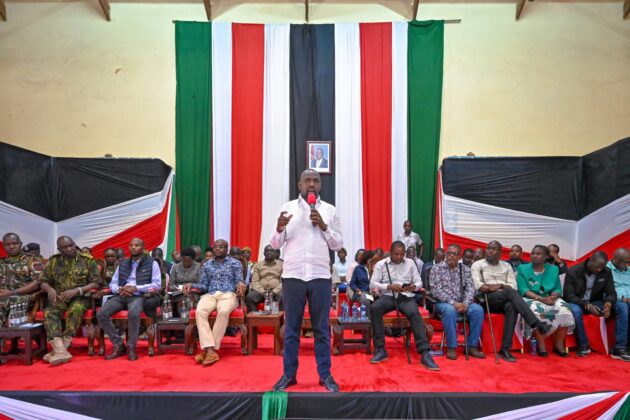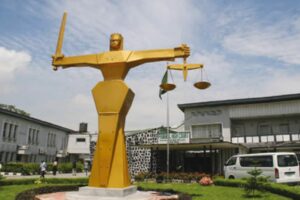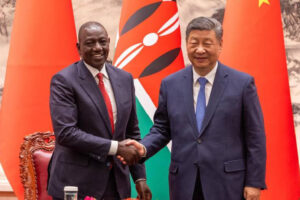
NAIROBI, Kenya Jul 18 – Interior Cabinet Secretary Murkomen has issued his inaugural policy directive aimed at ending the excessive and unlawful use of force by police officers in the wake of public outcry over police violence during recent anti-government protests which have left dozens dead and hundreds maimed.
The “Policy Directive No. 1 of 2025 on the Use of Force and Firearms”, signed by Murkomen and circulated to all police formations, sets strict guidelines for when and how officers may use force, with focus on necessity and accountability.
“Force must never be used as a form of extrajudicial punishment. The use of force shall be no more than the minimum reasonably necessary in the circumstances,” the directive reads.
Dozens of young protesters were shot or injured in Nairobi, Mombasa, Kisumu, and other towns across the country with civil society organizations and religious leaders demanding answers from the government, accusing the police of violating the Constitution and turning peaceful protests into battlegrounds.
According to the directive, a police officer may only use a firearm if there is a real and immediate threat to life or serious injury and only when there is no other alternative.
“A police officer is not entitled to discharge a firearm against a person unless the officer has reasonable grounds to believe that the person is committing or about to commit an act likely to endanger life,” it states.
Police officers are also required to first apply non-violent means, such as verbal warnings, negotiation, or de-escalation, before resorting to physical force.
The Ministry of Interior has reaffirmed the right to peaceful assembly under Article 37 of the Constitution, and obliges police to provide security to lawful demonstrators.
“The National Police Service shall take all reasonable measures to shield peaceful assemblies from violence, intimidation or other interference by third parties,” the policy directive reads.
Murkomen’s policy also makes it clear that unlawful but non-violent protests do not justify violent dispersal. In such cases, police must avoid using force where possible and if necessary, limit it to the minimum extent required.
“In determining the proportionality of force to apply of force to apply the police officers shall consider the person’s behavior and their level of resistance, if the person refuses to comply or exhibits body language exhibiting non-compliance any assaults where there exists the possibility of great bodily harm or death,” the policy directive reads.
Police Officers will now be required to provide medical aid immediately to the affected persons incase of injuries during the protests with the intention being to preserve human life at all times.
In case of deaths, the police officers will be required to notify the Independent Policing Oversight Authority (IPOA) with failure to adhere to the directive amounting to misconduct or possible criminal liability.
“Law enforcement officials shall not use force or firearms against persons expect on self defense or defence of others against imminent threat of death or serious injury,” the document reads.
The directive also stresses that police must exercise extra caution when dealing with children, persons with disabilities, the elderly, and vulnerable women. Any force used must be non-discriminatory, proportional, and respectful of dignity.
In a statement accompanying the directive, CS Murkomen said the new rules reflect the government’s commitment to uphold the rule of law and restore public trust in law enforcement.
“We will not allow rogue officers to undermine our Constitution. The era of impunity in the use of force is over. The police must serve the people firmly but fairly,” he said.
He also directed all county commanders and station officers to ensure their teams are trained and briefed on the new policy without delay.





